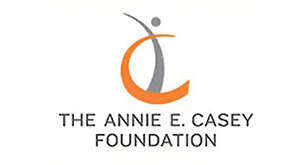CHILDREN WITH SPECIAL HEALTH CARE NEEDS
In 2019–2020, 19% of kids living in the United States — more than 14 million children total — had special health care needs, according to a 2022 summary of the Maternal and Child Health Bureau’s National Survey of Children’s Health. Children within this group are more likely to experience chronic physical, developmental, behavioral or emotional conditions and require added care and services. The same survey also found that:
- Close to 30% of U.S. households with children have at least one child with a special health care need.
- Special health care needs are more common among children who live in poverty and rely on public health insurance when compared to children without such needs.
- Among kids ages 3 to 17 with special health care needs, more than half (56%) have a current mental health or behavioral diagnosis, such as ADHD, depression or anxiety.
STUDENTS WITH DISABILITIES
In the U.S. public school system in 2021–22, more than 7 million students ages 3 to 21 received special education services for disabilities, according to the National Center for Education Statistics. Since 2010-11, this total has increased by nearly one million students and jumped from representing 13% to 15% of the total public school student population.
The most prevalent disabilities among students receiving special education services in 2021–22 were:
- specific learning disabilities (32%);
- speech or language impairments (19%);
- other health impairments — a category that includes conditions like asthma, diabetes and epilepsy (15%); and
- autism (12%).
Other less common disabilities include developmental delays, intellectual disabilities, emotional disturbances, multiple disabilities, hearing impairments, orthopedic impairments, visual impairments, traumatic brain injuries and deaf-blindness.
Disparities by race and ethnicity exist in the 2021–22 data set:
- The share of U.S. students receiving special education for disabilities was highest for American Indian or Alaska Native (19%) and Black (17%) students.
- Among all special education students ages 14 to 21 who exited school in 2020–21, 75% graduated with a regular high school diploma. This outcome was less likely for American Indian or Alaska Native (69%), Black (71%), Latino or Hispanic (72%) and Pacific Islander (72%) students as well as students of multiple racial backgrounds (74%).
These findings indicate that children and youth of color who have disabilities are experiencing greater hurdles to academic success. Policymakers, schools, community partners, funders and other stakeholders must look to strengthen support for these children to ensure that that they have equitable opportunities to thrive.

